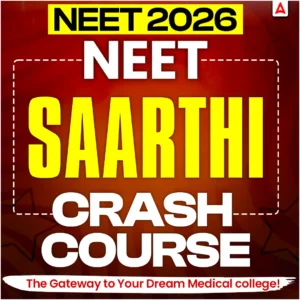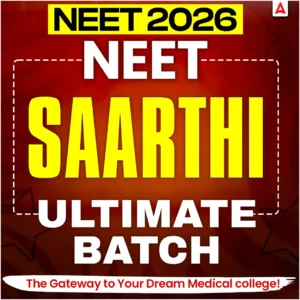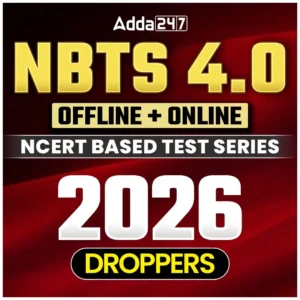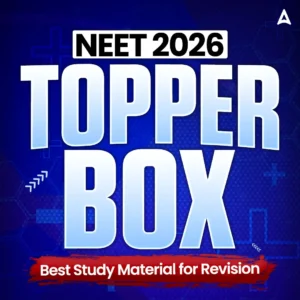The Joint Entrance Examination (JEE) Main 2026 is a national examination considered one of the prominent examinations for candidates to take who are now want to take admission in B.E., B.Arch., and B.Planning. The JEE Main exam is a symbol of success; every year, a wide range of candidates prepare for the JEE Main exam. One of the most important parts throughout the preparation process is complete clarity on the JEE Mains Syllabus.
The article will discuss in detail the JEE Main syllabus 2026 that includes the topics of Physics, Chemistry, and Mathematics with the exam pattern, weightage, and strategies for preparation.
JEE Main Syllabus 2026: Physics
Physics is the most important of all subjects of JEE Main, since, in addition to understanding various concepts, it involves the use of numbers. The syllabus of physics is divided into both class 11 and class 12 topics. Here are some main topics mentioned below:
Class 11 Physics Syllabus |
| Chapter | Topics |
|---|---|
| Work, Energy, and Power | Work done by constant/variable force; Kinetic & potential energy; Work-energy theorem; Power & efficiency; Potential energy of a spring; Conservation of mechanical energy; Conservative & non-conservative forces; Motion in a vertical circle; Elastic & inelastic collisions (1D & 2D) |
| Properties of Solids and Liquids | Stress-strain relation, Hooke’s law, Young’s modulus, bulk modulus, modulus of rigidity; Pressure due to fluid column, Pascal’s law, effect of gravity; Viscosity, Stokes’ law, terminal velocity, streamline & turbulent flow, critical velocity, Bernoulli’s principle & applications; Surface tension, drops, bubbles, capillary rise; Heat, temperature, expansion, calorimetry, latent heat; Heat transfer: conduction, convection, radiation |
| Gravitation | Universal law; Acceleration due to gravity (variation & applications); Potential energy, potential; Escape velocity; Satellite motion: orbital velocity, time period, energy; Kepler’s laws |
| Kinematics | Frame of reference; Motion in straight line; Speed & velocity; Uniform & non-uniform motion; Average speed, instantaneous velocity; Uniformly accelerated motion, v–t & x–t graphs; Equations of motion; Relative velocity |
| Waves | Wave motion: longitudinal & transverse, speed of wave, displacement relation; Principle of superposition; Reflection; Standing waves in strings & organ pipes; Fundamental mode & harmonics; Beats |
| Laws of Motion | Force & inertia; Newton’s laws (1st, 2nd, impulse, 3rd); Conservation of momentum & applications; Equilibrium of concurrent forces; Static & kinetic friction, rolling friction; Dynamics of circular motion; Vehicle on level & banked roads |
| Oscillations | SHM and equations; Energy in SHM; Resonance and damping (qualitative) |
| Rotational Motion | Centre of mass (two-particle system & rigid body); Torque, angular momentum & conservation; Moment of inertia & radius of gyration; MOI of simple objects; Parallel & perpendicular axes theorems; Equilibrium of rigid bodies; Rigid body rotation equations; Linear vs rotational motion |
| Thermodynamics | Thermal equilibrium, temperature; Zeroth law; Heat, work, internal energy; First law (isothermal & adiabatic); Second law (reversible & irreversible processes) |
| Kinetic Theory of Gases | Equation of state, work on gas; Assumptions; Pressure concept; Kinetic interpretation of temperature; RMS speed, degrees of freedom, equipartition of energy, heat capacities; Mean free path, Avogadro’s number. |
| Units and Measurement | Units, system of units; SI units (fundamental & derived); Least count, significant figures, errors; Dimensional analysis & applications |
Class 12 Physics Syllabus |
| Chapter | Topics |
|---|---|
| Current Electricity | Drift velocity, mobility, Ohm’s law, resistance, I–V characteristics; Resistivity & conductivity, series/parallel resistors, temperature dependence; Internal resistance, emf, cell combinations; Kirchhoff’s laws, Wheatstone bridge, Metre bridge |
| Electromagnetic Waves | Displacement current; EM wave characteristics; Transverse nature; Electromagnetic spectrum (radio, microwave, infrared, visible, UV, X-rays, gamma) & applications |
| Atoms and Nuclei | Rutherford & Bohr models; Energy levels & spectra; Radioactivity (α, β, γ); Mass defect, binding energy curve, nuclear fission & fusion |
| Electronic Devices | Semiconductors, diode (forward/reverse bias), rectifier; LED, photodiode, solar cell; Zener diode regulator; Logic gates (OR, AND, NOT, NAND, NOR) |
| Optics | Reflection (spherical mirrors), mirror formula; Refraction (plane & spherical surfaces), lens formula, lens maker, TIR & applications; Magnification, power of lens, lens combination, prism refraction; Microscope & telescope (reflecting/refracting), magnifying power; Wave optics: Huygens principle, interference (Young’s double slit, fringe width), diffraction (single slit), polarization & Polaroid |
| Electrostatics | Charges, Coulomb’s law, superposition, continuous distribution; Electric field, dipole, torque; Gauss’s law (applications: wire, plane, shell); Electric potential (point charge, dipole, system), equipotentials, potential energy; Conductors, dielectrics, polarisation; Capacitors (series/parallel), parallel plate with/without dielectric, energy stored |
| Dual Nature of Matter and Radiation | Alpha scattering; Rutherford & Bohr models; Hydrogen spectrum; Nuclear composition, mass, mass–energy relation; Mass defect, binding energy per nucleon, fission & fusion |
| Magnetic Effects of Current and Magnetism | Biot–Savart law (circular loop), Ampere’s law (wire, solenoid); Force on moving charge & conductor, force between parallel conductors (ampere); Torque on current loop, galvanometer (ammeter/voltmeter); Current loop as dipole, bar magnet as solenoid; Dipole field, torque; Para/diamagnetic/ferromagnetic materials, temperature effects |
| Electromagnetic Induction and AC | Faraday’s law, induced emf/current, Lenz’s law, eddy currents, self/mutual inductance; AC: peak & RMS values; Reactance, impedance, LCR series circuit, resonance; Power in AC, wattless current; AC generator, transformer |
JEE Main Syllabus 2026: Chemistry
If a student’s basics in NCERT are strong, Chemistry in JEE Main can be scoring because it is factored into (i) Physical Chemistry, (ii) Inorganic Chemistry, and (iii) Organic Chemistry.
Class 11 Physical Chemistry Syllabus |
| Chapter | Topics |
|---|---|
| Equilibrium | Dynamic equilibrium; Equilibria in physical processes (solid-liquid, liquid-gas, gas-gas, solid-gas), Henry’s law; Law of chemical equilibrium, equilibrium constants (Kp, Kc), relation with ΔG, factors affecting equilibrium (concentration, pressure, temperature, catalyst, Le Chatelier’s principle); Ionic equilibrium: strong/weak electrolytes, ionisation concepts (Arrhenius, Bronsted-Lowry, Lewis), ionisation constants, water ionisation, pH scale, common ion effect, hydrolysis, solubility product, buffer solutions |
| Some Basic Concepts in Chemistry | Matter & its nature; Dalton’s atomic theory; Atom, molecule, element, compound; Laws of chemical combination; Atomic/molecular masses; Mole concept, molar mass, % composition; Empirical & molecular formulae; Chemical equations & stoichiometry |
| Chemical Thermodynamics | Thermodynamics basics: system/surroundings, extensive & intensive properties, state functions; First law: work, heat, internal energy, enthalpy, heat capacity, Hess’s law, enthalpies (bond dissociation, combustion, formation, atomization, sublimation, phase transition, hydration, ionization, solution); Second law: entropy, spontaneity, ΔS universe, ΔG system, ΔG° & equilibrium constant |
| Atomic Structure | Electromagnetic radiation, photoelectric effect; Hydrogen spectrum, Bohr’s model (energy, radii, limitations); Dual nature of matter, de Broglie relation, Heisenberg uncertainty principle, quantum mechanics basics; Atomic orbitals (wave functions), quantum numbers (n, l, m, s) & significance, orbital shapes (s, p, d); Electron spin, rules for electron filling (Aufbau, Pauli’s principle, Hund’s rule); Electronic configuration, stability of half-filled & filled orbitals |
| Chemical Bonding and Molecular Structure | Kossel-Lewis theory, ionic & covalent bonds; Ionic bonding (factors, lattice enthalpy); Covalent bonding (electronegativity, Fajan’s rule, dipole moment, VSEPR theory, molecular shapes); Valence Bond Theory, hybridization (s, p, d orbitals), resonance; Molecular Orbital Theory (LCAO, bonding/antibonding orbitals, σ & π bonds, electronic configurations, bond order, bond energy, bond length); Metallic bonding, hydrogen bonding & applications |
Class 12 |
| Chapter | Topics |
|---|---|
| Redox Reactions and Electrochemistry | Oxidation-reduction concepts, oxidation number rules, balancing redox reactions; Electrolytic & metallic conduction; Conductance in electrolytic solutions, molar conductivities, variation with concentration, Kohlrausch’s law & applications; Electrochemical cells (electrolytic & galvanic), electrodes, standard electrode potentials; Half-cell & cell reactions, emf measurement, Nernst equation, relation with Gibbs’ energy; Dry cell, lead accumulator |
| Solutions | Expression of concentration (molality, molarity, mole fraction, percentage); Raoult’s law, vapour pressure (ideal & non-ideal solutions), vapour pressure-composition plots; Colligative properties: relative lowering of vapour pressure, depression of freezing point, elevation of boiling point, osmotic pressure; Determination of molar mass, abnormal molar masses, van’t Hoff factor and significance |
| Chemical Kinetics | Rate of reaction, factors (concentration, temp, pressure, catalyst); Elementary & complex reactions; Order & molecularity; Rate law, rate constant, units; Zero-order & first-order reactions (differential & integral forms, half-lives, characteristics); Effect of temperature, Arrhenius equation, activation energy; Collision theory of bimolecular gaseous reactions |
Inorganic Chemistry:
| Chapter | Topics Covered |
|---|---|
| Coordination Compounds | Introduction to coordination compounds; Werner’s theory; Ligands, coordination number, denticity, chelation; IUPAC nomenclature of mononuclear complexes; Isomerism; Bonding (Valence Bond Theory & basics of Crystal Field Theory); Colour and magnetic properties; Importance of coordination compounds (qualitative analysis, metallurgy, biological systems). |
| p-block Elements (Groups 13–18) | General characteristics, electronic configuration, trends across periods and down groups; Unique behaviour of first element in each group; Group 13 (Boron family): Diborane, Borax; Group 14 (Carbon family): Allotropes, catenation, oxides of carbon; Group 15 (Nitrogen family): Ammonia, nitric acid, oxides of nitrogen; Group 16 (Oxygen family): Ozone preparation, sulphur compounds; Group 17 (Halogens): Interhalogen compounds, chlorine properties, iodine test; Group 18 (Noble gases): Xenon fluorides & oxides (structure & uses); Trends in acidic/basic nature, oxidation states, anomalous behaviour. |
| d-block Elements (Transition Elements) | General introduction; Electronic configuration; Occurrence and characteristics; Trends in physical properties, ionisation enthalpy, oxidation states, atomic radii, colour, catalytic behaviour, magnetic properties, complex formation, alloy formation, interstitial compounds; Preparation, properties & uses of K₂Cr₂O₇. |
| f-block Elements (Inner Transition Elements) | Lanthanoids: Electronic configuration, oxidation states, lanthanoid contraction; Actinoids: Electronic configuration, oxidation states. |
| Classification of Elements and Periodicity in Properties | Modern periodic law & periodic table; s, p, d, f block elements; Periodic trends: atomic/ionic radii, ionisation enthalpy, electron gain enthalpy, valence, oxidation states, chemical reactivity. |
Organic Chemistry:
| Chapter | Topics Covered |
|---|---|
| Organic Compounds Containing Oxygen | Preparation, properties, reactions & uses; Alcohols: Identification of primary, secondary & tertiary, dehydration mechanism; Phenols: Acidic nature, electrophilic substitution (halogenation, nitration, sulphonation), Reimer–Tiemann reaction; Ethers: Structure; Aldehydes & Ketones: Nature of carbonyl group, nucleophilic addition (HCN, NH₃ derivatives, Grignard reagent), oxidation, reduction (Wolff–Kishner & Clemmensen), acidity of α-hydrogen, Aldol condensation, Cannizzaro reaction, Haloform test, distinguishing reactions; Carboxylic Acids: Acidic strength & influencing factors. |
| Some Basic Principles of Organic Chemistry | Tetravalency of carbon, shapes (hybridization s & p), classification of organic compounds (functional groups with halogens, oxygen, nitrogen, sulphur), homologous series; Isomerism: Structural & stereoisomerism; Nomenclature: Trivial & IUPAC; Bond fission: Homolytic, heterolytic; Free radicals, carbocations, carbanions, stability; Electrophiles & nucleophiles; Electronic effects: Inductive, electromeric, resonance, hyperconjugation; Common reactions: substitution, addition, elimination, rearrangement. |
| Organic Compounds Containing Halogens | General methods of preparation, properties & reactions, nature of C–X bond, substitution mechanisms; Uses & environmental effects of chloroform, iodoform, freons, DDT. |
| Purification and Characterisation of Organic Compounds | Purification: Crystallisation, sublimation, distillation, differential extraction, chromatography (principles & applications); Qualitative analysis: Detection of N, S, P, halogens; Quantitative analysis: Estimation of C, H, N, halogens, S, P (basic principles); Calculations of empirical & molecular formulae; Numerical problems in organic quantitative analysis. |
| Hydrocarbons | Classification, isomerism, IUPAC rules, general preparation, properties & reactions; Alkanes: Conformations (Sawhorse, Newman projection of ethane), halogenation mechanism; Alkenes: Geometrical isomerism, electrophilic addition mechanism, addition reactions (H₂, halogens, water, HX — Markovnikov & peroxide effect), ozonolysis, polymerization; Alkynes: Acidic character, addition reactions, polymerization; Aromatic hydrocarbons: Nomenclature, benzene structure & aromaticity, electrophilic substitution mechanism (halogenation, nitration), Friedel–Crafts alkylation & acylation, directive influence of substituents. |
| Biomolecules | Carbohydrates: Classification (mono-, di-, polysaccharides), glucose & reactions; Proteins: Amino acids, peptide bond, structures (primary to quaternary); Vitamins & hormones: Types & biological roles; Enzymes: Function & specificity; Nucleic acids: DNA & RNA structure, components (sugar, phosphate, nitrogen base). |
| Organic Compounds Containing Nitrogen | Amines: Structure, primary/secondary/tertiary, basicity, diazotisation; Diazonium salts: Preparation & synthetic use in azo dye formation; Cyanides & isocyanides: Nature & reduction. |
JEE Main Syllabus 2026: Mathematics
Mathematics is a very lengthy subject in the JEE Mains syllabus, covering the syllabus of classes 11 and 12, 14 units.
| Chapter | Topics Covered |
|---|---|
| Sets, Relations, Functions | Venn diagrams, types of functions |
| Complex Numbers & Quadratics | Imaginary numbers, quadratic equations |
| Matrices & Determinants | Solving systems of equations |
| Permutations & Combinations | Fundamental counting methods |
| Binomial Theorem | Expansion of expressions |
| Sequence & Series | Arithmetic and geometric progressions |
| Limits, Continuity & Differentiability | Basics of calculus |
| Integral Calculus | Area under curves |
| Differential Equations | Solving equations with real-world applications |
| Coordinate Geometry | Lines, circles, conics |
| 3D Geometry | Points, lines, and planes in space |
| Vectors | Directions, magnitudes, and operations |
| Statistics & Probability | Mean, median, probability concepts |
| Trigonometry | Angles, identities, inverse trigonometric functions |
JEE Mains Syllabus 2026 PDF Download
The syllabus of JEE Main 2026 is expected to be uniform with the NCERT syllabus of Classes 11 and 12, with only minor changes, as the syllabus will be revised to align with the CBSE and state board syllabi. The first consideration is analysing the syllabus to plan a strategy for studies and focus on the important chapters, and the time required for the study plan. Download the syllabus given below:
| JEE Main Paper | Syllabus PDF Download |
| (BE/B.Tech)Paper 1 | Download PDF |
| (BArch)Paper 2A | Download PDF |
| (BPlan)Paper 2B | Download PDF |
JEE Mains 2026 Exam Pattern
Before studying the syllabus, students should check the exam pattern. This can inform students about the layout of the exam by weightage to specific subjects.
The exam mode: A Computer-Based Test (CBT)
Papers: Paper 1 – B.E./B.Tech (Physics, Chemistry, Mathematics)
Paper 2A – B.Arch (Mathematics, Aptitude Test, Drawing Test)
Paper 2B – B.Planning (Mathematics, Aptitude Test, Planning-based questions)
Time Duration: 3 Hours
Types of Questions: Objective (MCQ) + Numerical Value-based questions
Marks: Maximum Marks 300 for paper 1
Weightage for JEE Mains Syllabus 2026
NTA has not published any chapter-wise weightage. You can look for important topics based on the trend from previous years.
| Subject | Important Topics | Approx. Weightage |
|---|---|---|
| Mathematics | Calculus (Differentiation & Integration) | ~30% |
| Algebra (Complex Numbers, Probability, Matrices) | ~20% | |
| Coordinate Geometry | ~20% | |
| Others (Trigonometry & Miscellaneous) | ~10% | |
| Physics | Mechanics | ~25% |
| Electricity & Magnetism | ~25% | |
| Modern Physics | ~20% | |
| Waves & Optics | ~15% | |
| Thermodynamics & Properties of Matter | ~10% | |
| Chemistry | Organic Chemistry | ~35% |
| Inorganic Chemistry | ~30% | |
| Physical Chemistry | ~35% |
Preparation Tips: JEE Mains 2026
- Know the Syllabus Well – Follow NCERT Class 11 and 12.
- Follow Standard Books – HC Verma, NCERT + OP Tandon, and RD Sharma/JEE specific books for Physics, Chemistry, and Maths respectively.
- Create a Study Plan – Allocate time to each subject and stick to daily targets.
- Mock Tests – Take mock tests online. Would suggest enrolling in a test series to know the exam time scenario.
- Revision – Prep summary notes and formula sheets for quick revision.
- Weak Points –Make a chart of areas of improvement after mock tests, and then focus on those weak topics specifically.
- Time Management in Actual Exam – Do not spend too long on one question; move on to easier ones first.










 CBSE Admit Card 2026 for Private & R...
CBSE Admit Card 2026 for Private & R...
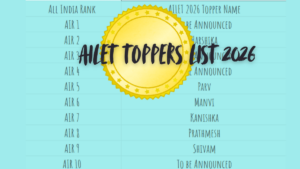 AILET 2026 AIR 1: Check Full Toppers Lis...
AILET 2026 AIR 1: Check Full Toppers Lis...
 AILET Result 2026 OUT, How to Download S...
AILET Result 2026 OUT, How to Download S...
